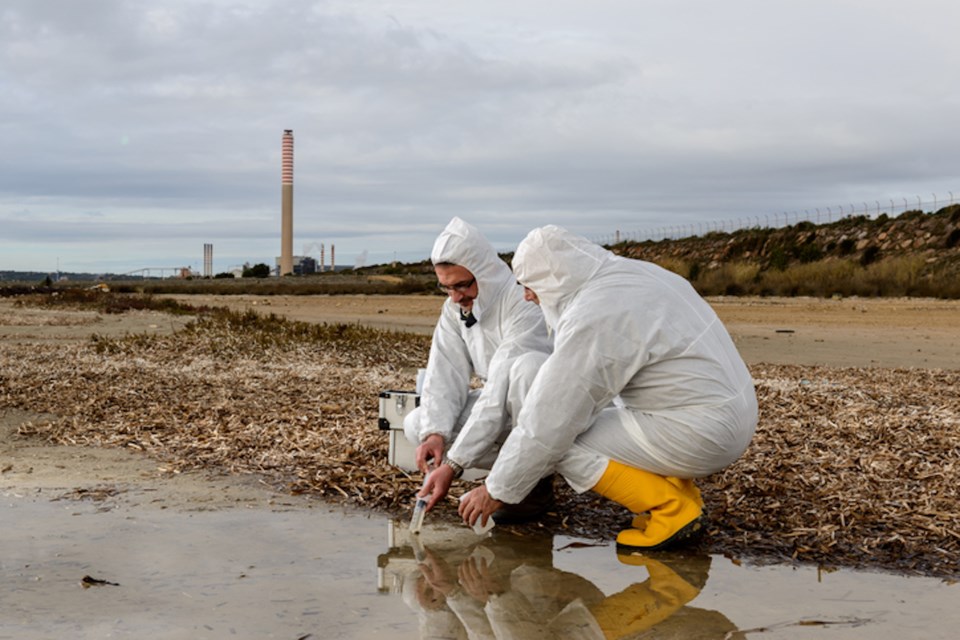Recent revisions to the British Columbia's Contaminated Sites Regulation are creating headaches for developers, and could end up proving costly for both homebuyers and the environment.
Stage 14 amendments to the regulation change how the province expects developers to handle soils from Schedule 2 sites, which include a range of activity from snow dumping and leather tanning to petrochemical processing and storage. Properties actually or likely affected by the migration of contaminants from adjacent properties are also included.
But consultants say the reach is even broader than that, affecting land assemblies where a portion of the site may have been subject to a Schedule 2 use but other portions – especially those uphill from the affected portion and typically unaffected by the migration of contaminants – were not.
Raminder Grewal, president of Keystone Environmental, gives the example of a land assembly where a gas station is in the lower corner and seven single-family dwellings sit adjacent to it.
“It takes away any professional judgment. We couldn’t say these houses are up-grade from the gas station,” he said. “It’s black-and-white – you have to sample.”
The changes have sent industry scrambling to figure out how to manage the increased costs the changes will add to projects.
“If you have a Schedule 2 use on your site, and you’re going to redevelop it, you have to characterize all the non-contaminated soil – everything that’s coming out of your bulk excavation – and the number of samples you collect is dependent on the volume of soil being transported off site,” Grewal said.
Keystone has run the numbers for a tower site in Burnaby with five levels of underground parking and determined that sampling alone – before any remediation is done – will cost between $80,000 and $100,000. An estimate for a site in Vancouver worked out to about $70,000.
Moreover, it’s not just post-industrial contaminants that could be characterized but naturally occurring metals, too.
“Sometimes you can have naturally occurring metals which are above the standards. And even though it’s naturally occurring, it’s above the standard, so you’re paying a premium for disposing of that soil,” Grewal said. “And that will factor into the increased cost of housing, because the developers are going to pay more for the excavation.”
To get around the costs to sample, remediate and dispose of the larger volumes of soil now covered by the changes, Grewal says many developers may opt to pursue ocean disposal rather than land-based options.
“What’s going to end up happening is we’re looking at ocean disposal a lot more than disposing of soil on land,” he says. “You can do ocean disposal at a fraction of the sampling cost and disposal costs are a lot less as well.”
While ocean disposal is cost-effective, it will mean otherwise clean soils that would otherwise be used as fill could be lost.
“The ministry’s purpose is to reuse the soil as much as possible, but as one of the unintended consequences, more soil will go into the ocean,” Grewal says.
But for the Agricultural Land Commission (ALR), where fill accounted for 44 per cent of active compliance and enforcement files in the year ended March 31, 2022, the new rules will protect soil and farmland.
“We are not the experts on these amendments, however we feel that the new requirements will reduce illegal dumping in the ALR of soil originating from commercial/industrial sites,” said Avtar Sundher, the commission’s director of operations.
Any soils disposed of at seas likely are likely to be clay soils or those too contaminated to meet what he calls “the most stringent agricultural requirements” that would see them approved for use on protected farmland.
The expense and hassle isn’t sitting well with developers.
“The result of this amendment to regulation is that it will slow down development, increase costs and likely result in less re-use and more disposal of soil,” said Brad Jones, senior vice-president, development, with Wesgroup Properties, which has redeveloped a number of former industrial sites.
Jones says he’s heard of projects facing added expenses of up to $1 million as a result of the new sampling requirements.
“This would not include the cost of time,” he added. “As a result of the time and cost of the regulations, I have heard that some groups are considering alternative measures, including ocean disposal of clean soil, as the testing requirements make it uneconomical to go through that process and have the clean soil be used at other sites requiring fill material.”
Receiving sites also have questions, as the new regulations require them to document incoming material through soil relocation agreements.
The BC Ministry of the Environment and Climate Change Strategy says the paperwork is designed to make the process for relocating contaminated soils more transparent and assist the ministry with compliance and enforcement activities.
Concerns from industry are being heard, however.
Grewal says the ministry plans to revisit the sampling frequencies and is considering letting professional judgment play a greater role in site characterization.
“We’re asking for some professional judgment where we can make those decisions,” he says.
But there is no timeline for the changes.
“The ministry is currently reviewing feedback received from a number of different groups, including industry, and are assessing what changes, if any, need to be made,” a ministry statement to Western Investor said.



